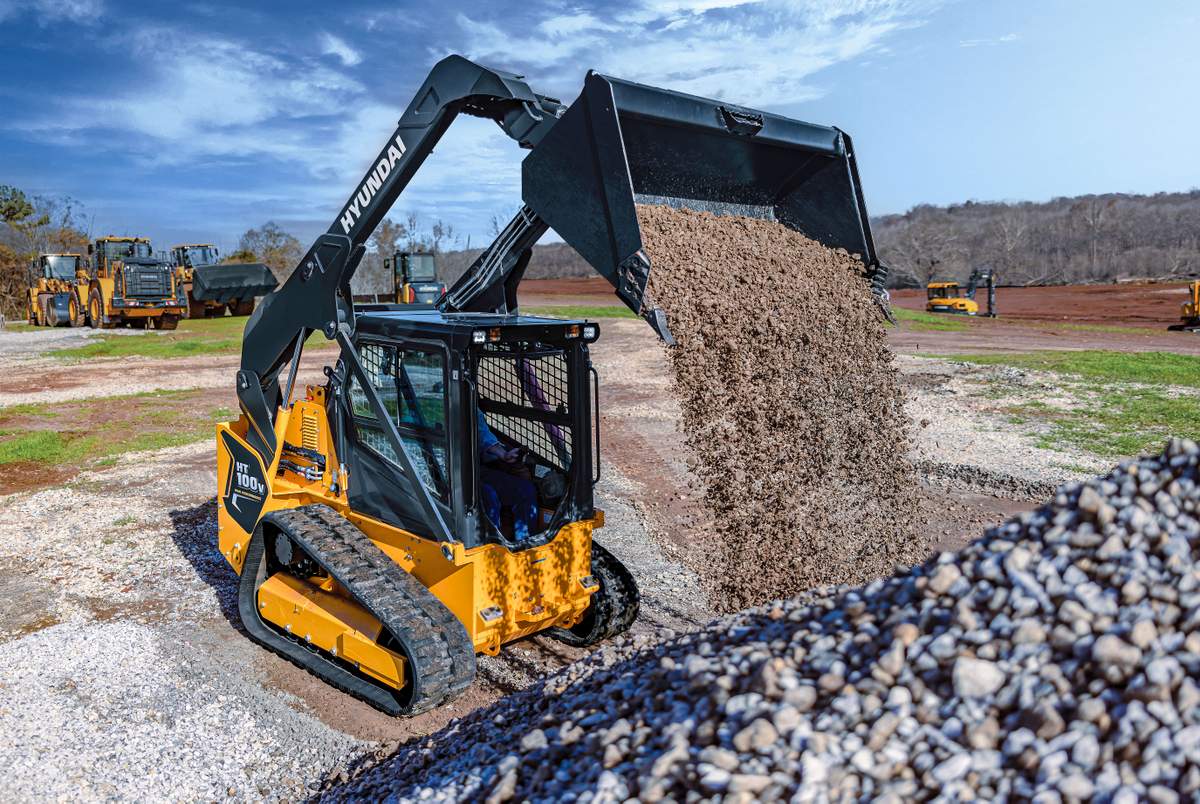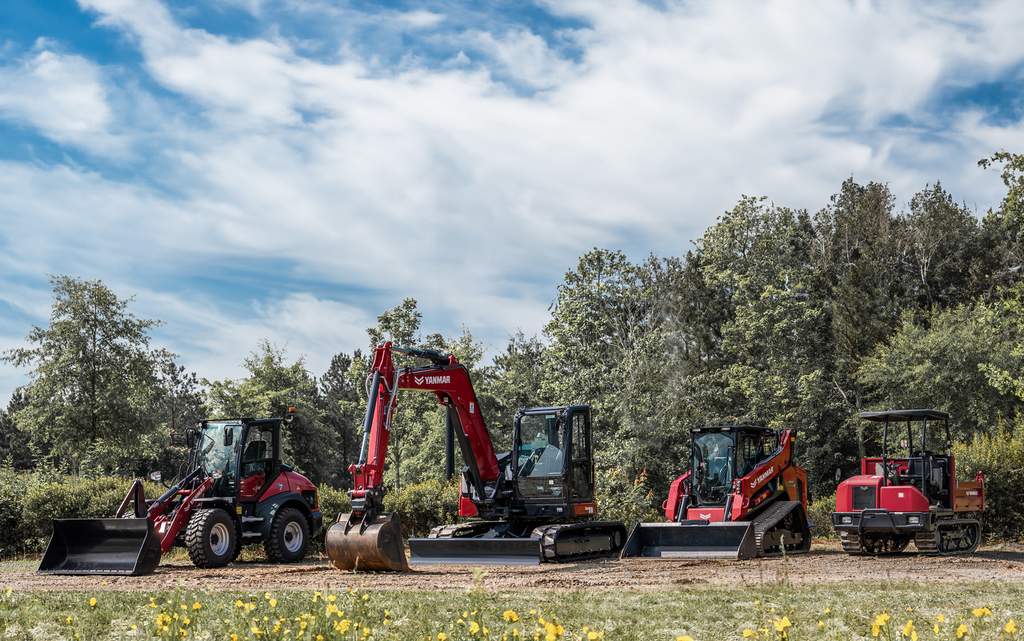Get to Know the 317 P-Tier — John Deere’s Smallest Compact Track Loader

John Deere‘s 317 P-Tier may be the smallest model in the company’s compact track loader lineup, but it definitely stands out. In this Q&A, Emily Pagura, John Deere’s product marketing manager, discusses its smallest compact track loader — highlighting specs, standout technologies and design advantages — and explains how this nimble machine is helping contractors, landscapers and owner-operators get more done with less.
Compact Equipment: First off, thanks so much for taking the time to talk to us, Emily. Can we start off by summarizing your smallest compact track loaders offered today? Maybe share the major features, specs, technologies and options associated with these machines. Also, what unique features can be found on these units?
Pagura: The 317 P-Tier compact track loader is the smallest model in the John Deere lineup of CTLs. Coming in at an operating weight of 8,423 lbs, a max speed of 7 mph and a hydraulic flow rate of 17 gallons per minute, the 317 P-Tier CTL offers optimal maneuverability, operator comfort and superior versatility.
Helping to provide a comfortable operator experience, the 317 P-Tier offers a specious cab, an LCD monitor with vital operating information and electrohydraulic (EH) ISO-pattern controls for ease of operation. In addition, the sealed and pressurized cab reduces noise and dust on the jobsite.
What are the advantages of a smaller compact track loader vs. a bigger unit? Cheaper price? Easier to transport? Fits into more spaces? What are some disadvantages?
Our CTL lineup offers high power in smaller sized models that can seamlessly perform heavy-duty asks in small spaces. These models also reduce the need to have more heavy-duty machines for different jobs, as many attachments come with every size and model. When you add one of over 100 attachment options offered by John Deere to your compact track loader, customers can maximize versatility in preparing sites and moving landscaping materials such as mulch, rock and dirt with root rakes, rotary cutters, augers, buckets, blades, trenchers and pallet forks.
In addition, these models are easier to transport, maneuver effortlessly in tight jobsites and come at a more affordable price-point than larger construction models. Also, the overall affordability of the machines is another factor that continues to draw in customers from many applications when comparing to other common earthmoving machines.
Where do these super small CTLs end up working? What types of applications are popular for the smallest subcompact track loaders?
Smaller frame sized compact track loaders are able to operate in even tighter spaces than the larger models, and their ability to make quick turns and maintain a smaller footprint than larger pieces of construction equipment give them a unique advantage. Our CTL models are used in a wide variety of applications with the most popular being Ag material handling, site development, landscaping and rental.
What is the auxiliary flow to attachments? Both flow and pressure? Is high flow available? What types of attachments do contractors often gravitate towards with these smaller units?
The auxiliary hydraulic flow on a 317 P-Tier is 17 gpm at 3,450 psi. John Deere compact track loaders also come standard with connect under pressure, flat-faced hydraulic couplers that make it easy to change attachments.
Buckets and pallet forks are of course the most common attachments, along with augers and trenchers due to their versatility. The popularity of other attachments is going to vary by application. Landscapers and those clearing sites for work often have grapples or root rakes, power rakes, nursery forks and rotary cutters. Agriculture applications of course have a bale spear or hugger on hand for moving bales. And any type of contractor in climates that get snow might venture into snow removal work in the winter months, and usually have a combination of snow blades, pushers and blowers.
The full fleet of John Deere compact track loaders offer the advantage of Electrohydraulic (EH) controls, which offer increased functionality to allow operators to customize machine operations based on preference. The EH controls also require less operator effort and are not as fatiguing over longer periods of operation compared to manual linkages. With fewer physical components and maintenance requirements, EH control machines provide operators with increased productivity across a variety of job applications.
The EH controls on the John Deere CTL models also offer differential steering, an exclusive John Deere feature that speeds up the outside turning of tires/tracks for faster jobsite maneuvering.
What operational tips can you share when using smaller compact track loaders? Should contractors approach using these smaller track loaders differently? Are they easier to operate? Harder?
For best stability, keep the heavy end of the CTL uphill since when there is no load, the rear of the machine is heavier making the machine more stable. In addition, anytime that there is a significant amount of track off the ground, go slowly to minimize the impact after the breakover point is reached.
When it comes to visibility, John Deere compact track loaders offer a good view of the edges of your attachment, tracks and out the rear window. However, CTLs in general can be difficult to adjust to for operators who are used to sitting up higher in larger equipment. For them, I’d recommend equipping the machine with the rearview camera with dedicated screen in the cab.
The compact track loader is incredible versatile and thus is often used in settings where either the primary operator is newer to the industry, or there are several operators in and out throughout the course of the job. When equipped with the Joystick Performance Package, the 317 P-Tier has a few adjustable settings that an operator can customize, including the control pattern, response settings and changing the foot pedal from acceleration to deceleration. One of the best operation tips I can give is to work through those settings to get the machine set up in the most efficient way for the current operator.
What advice would you give a contractor looking to buy or rent a smaller compact track loader?
One of the greatest benefits of a smaller machine is the easy transport; as you consider this machine, take into account both your local regulations and your ability to haul the machine. Will you need a new truck to move the machine, or does your current fleet of work vehicles work with the machine you’re considering? This is a great starting point to consider when looking into buying or renting CTLs for your operations.
In addition, all of our compact track loader models are available at John Deere’s Construction & Forestry dealers as well as most Ag & Turf dealers. We strongly advise that anyone interested in utilizing a CTL for their business, whether it be rented or purchased, works closely with their local dealer to best determine their jobsite needs.
What trends do you see in the compact track loader market overall? Are buyers gravitating toward certain sizes or technologies? Are there certain regions where sales are increasing or decreasing? What interesting evolutions do you see in the market and the near future?
Overall, in the compact industry, we see customers wanting more out of their equipment. That often manifests as growing their fleet of attachments and expanding in a way that allows contractors to take on different kinds of work.
Grade control has continued to see increased demand from customers that own and operate compact track loaders. To address this, John Deere currently offers two CTLs with SmartGrade technology, including the 333 P-Tier and 335 P-Tier SmartGrade CTLs. Both models feature fully integrated SmartGrade technology that eliminates external masts and cables that enables grading tasks to be completed faster, in fewer passes, and with less rework compared to machines without grade-control technology.
Keith Gribbins is publisher of Compact Equipment.




